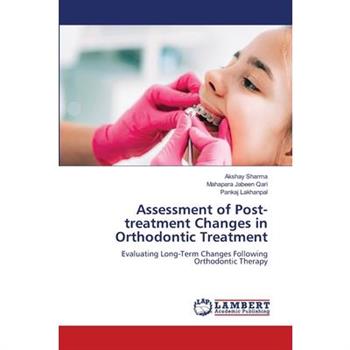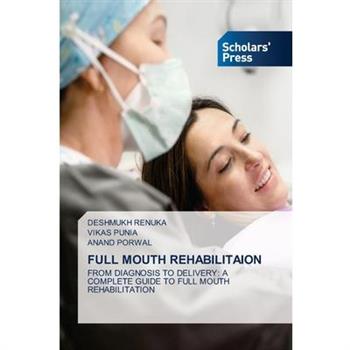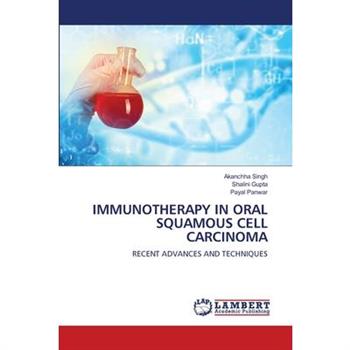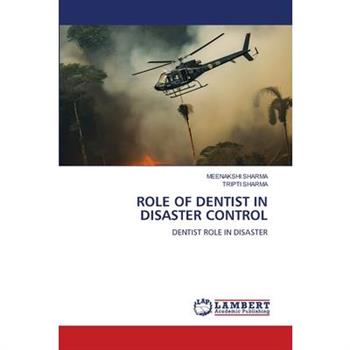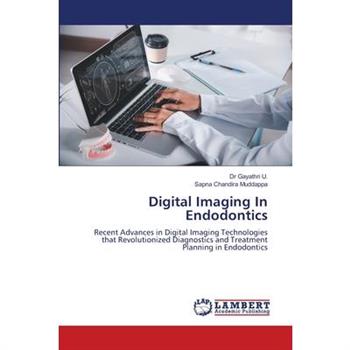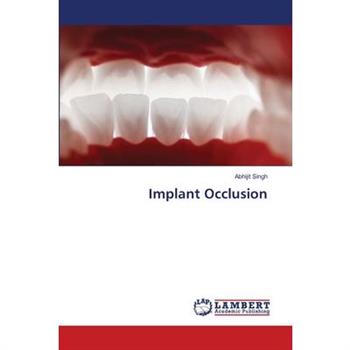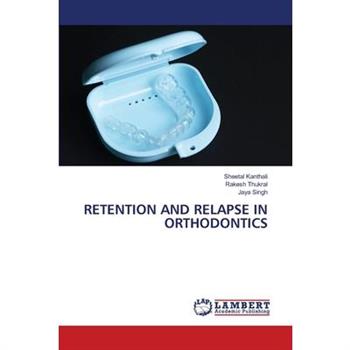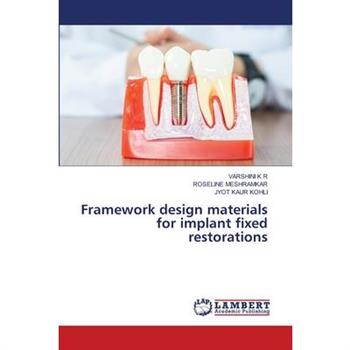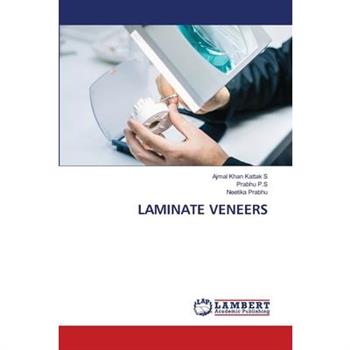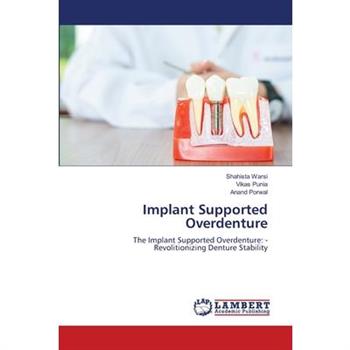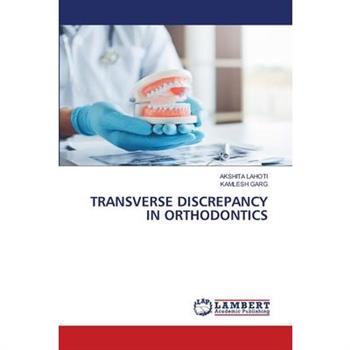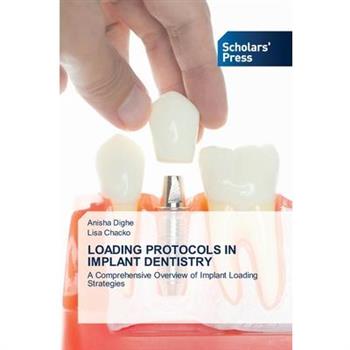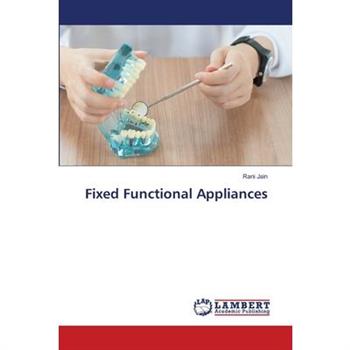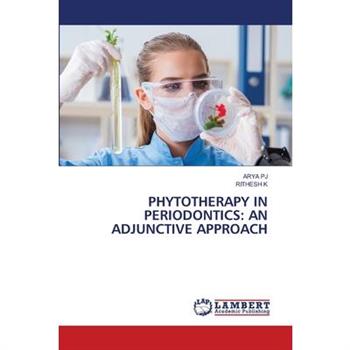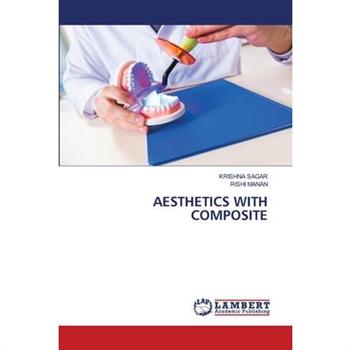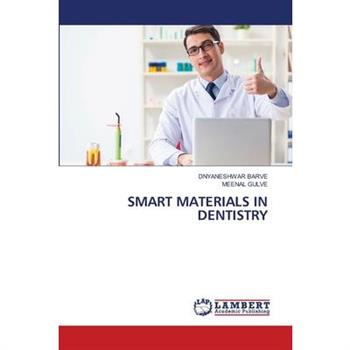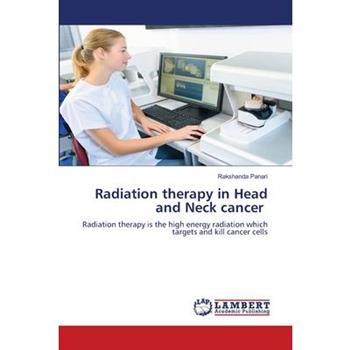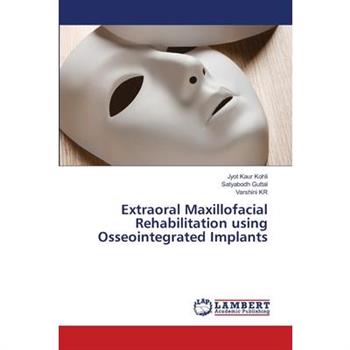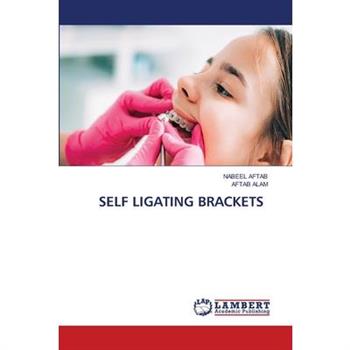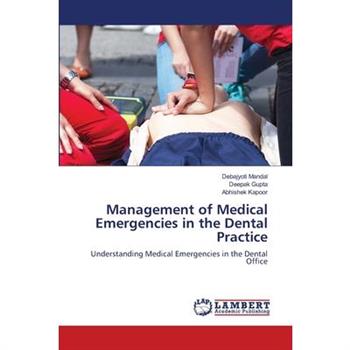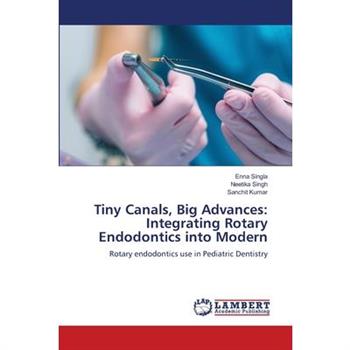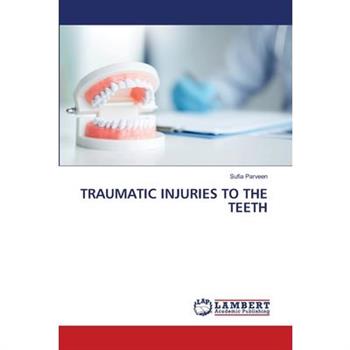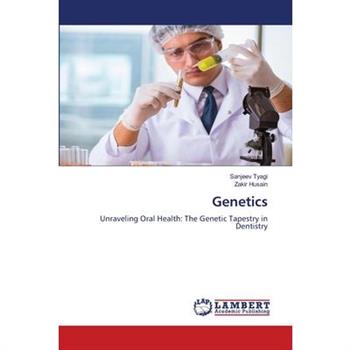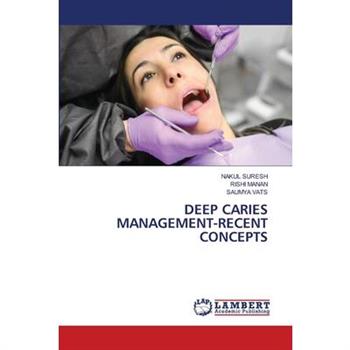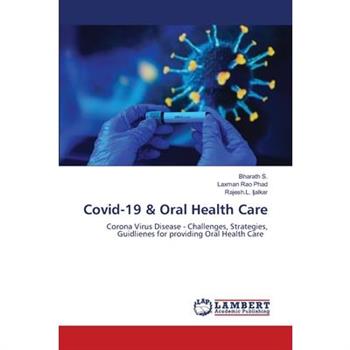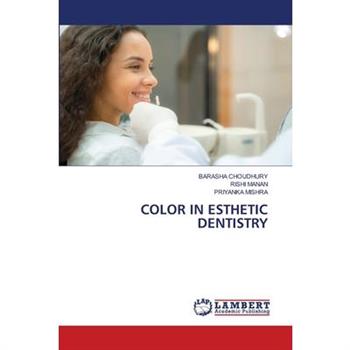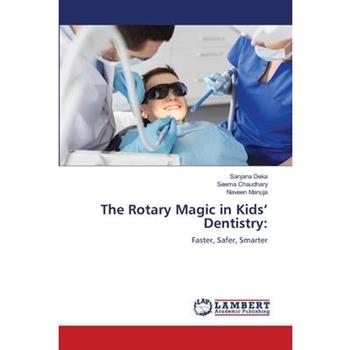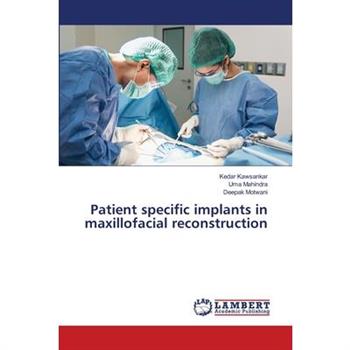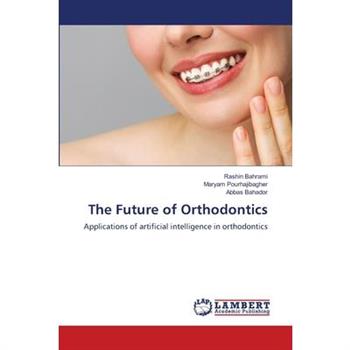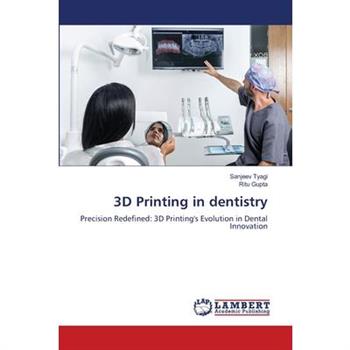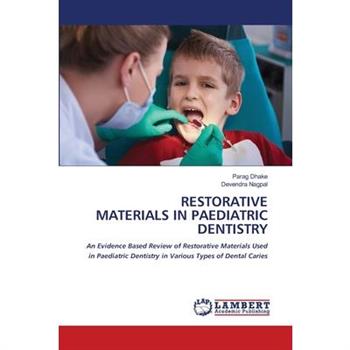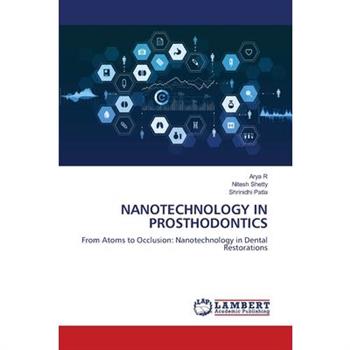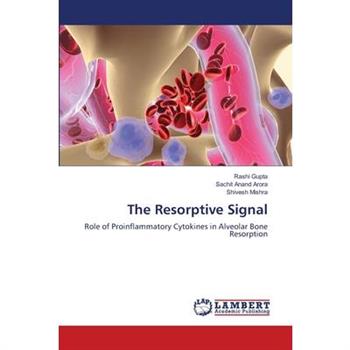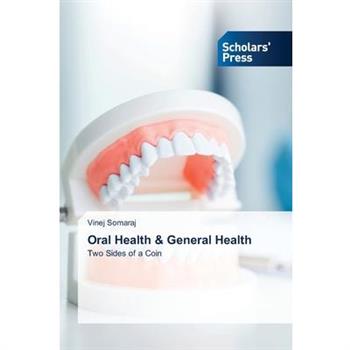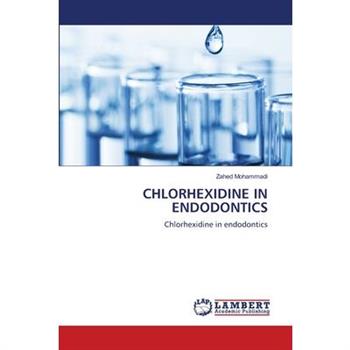Assessment of Post-treatment Changes in Orthodontic Treatment
The aim of orthodontic treatment is to move teeth as efficiently as possible with minimal adverse effects on teeth and supporting tissues. However following completion of orthodontic and orthopedic changes, teeth and their supporting structures have a tendency to move towards their original malocclusion. Such changes are attributed to either 'physiologic rebound' of the tissues or relapse. Orthodontics should therefore strive to achieve structural integrity, functional harmony, and esthetic balance as its goal so that relapse is minimised. The stability of orthodontic treatment is of paramount concern to an orthodontist and the assessment of treatment changes at each visit during the treatment assumes major significance towards achieving stable post treatment results. However, evaluating treatment results is extremely complex and requires an assessment of occlusion, hard and soft tissue relationships, growth changes, iatrogenic changes and long-term stability.
Full Mouth Rehabilitaion
Full Mouth Rehabilitation is a comprehensive dental approach aimed at restoring the function, aesthetics, and health of the entire dentition. It is particularly beneficial for patients with extensive dental issues, including tooth wear, loss, or occlusal discrepancies. The masticatory system's anatomy and physiology comprising the maxilla, mandible, temporomandibular joints, muscles of mastication, and neuromuscular coordination are fundamental to understanding full mouth rehabilitation. Proper function and harmony among these components are crucial for successful rehabilitation. Restoring the vertical dimension is critical, as its loss can affect facial aesthetics and function. Mouth preparation may involve selective grinding and establishing occlusal schemes. Mounting models using facebow transfers and setting condylar guidance are essential steps in replicating mandibular movements. Success depends on precise execution and patient compliance, addressing these challenges necessitates treatment planning, effective abutment preparation, regular follow-ups, patient education, expectation management, and collaborative efforts among specialists.
SUPPORTIVE PERIODONTAL THERAPY - A Comprehensive Review
Supportive Periodontal Therapy (SPT), often referred to as periodontal maintenance, is an essential, ongoing phase of periodontal treatment designed to prevent the recurrence and progression of periodontal disease. Once active therapy-whether surgical or non-surgical-is completed and periodontal stability is achieved, SPT becomes the cornerstone of long-term oral health. This phase focuses on preserving the results achieved during active therapy and preventing further periodontal breakdown.SPT is not a one-size-fits-all approach; it must be tailored to each patient's unique risk factors, disease severity, systemic condition, and compliance level. It is a collaborative process between the dental professional and the patient, emphasizing regular monitoring, maintenance of good oral hygiene, and proactive risk management.
Immunotherapy in Oral Squamous Cell Carcinoma
Immunotherapy has emerged as a promising treatment modality for oral squamous cell carcinoma (OSCC), especially in advanced and recurrent cases where conventional therapies offer limited survival benefits. By harnessing the body's immune system, immunotherapeutic approaches such as immune checkpoint inhibitors-particularly anti-PD-1 agents like nivolumab and pembrolizumab-have shown improved overall survival and quality of life in select OSCC patients, as demonstrated in landmark trials like KEYNOTE-048 and CheckMate 141. Other strategies, including cancer vaccines, adoptive cell therapy, cytokine therapy, and oncolytic viruses, are under investigation but have yet to achieve widespread clinical use. Despite these advances, challenges such as low response rates, immune-related adverse events, tumor heterogeneity, and resistance mechanisms limit the efficacy of immunotherapy. Biomarkers like PD-L1 expression, tumor mutational burden, and immune gene signatures are being explored to guide patient selection and predict response. Combination therapies with chemotherapy, radiotherapy, or other immunomodulators are being developed to enhance outcomes.
Role of Dentist in Disaster Control
Dentistry has valuable assets in personnel and facilities to contribute to the response to a mass casualty event, particularly one that results from the spread of disease through the population. The dental profession and emergency response communities should work together to maximize the effectiveness of dentistry's contribution and prepare the dental community to be effective responders. This book aims to bring this to everyone's notice.
Digital Imaging In Endodontics
Recent advances in imaging technologies have revolutionized dental diagnostics and treatment planning. Digital imaging systems have definite advantages over an analogue film in terms of immediacy of image display and seem equal to film imaging for most tested diagnostic purposes. Newer imaging techniques in use include: Digital imaging systems (Direct, Indirect, Optically scanned), Computed Tomography (CT), Cone Beam Computed Tomography (CBCT), Tuned Aperture Computed Tomography (TACT), Localized computed tomography (micro-computed tomography), Spiral computed tomography, Ultrasonography, Magnetic Resonance Imaging (MRI), Radio Visiography (RVG), and Dental scan. The topic will describe about these digital technologies that support the basic goals of diagnosis and treatment, as well as provide some information on their efficacy and effectiveness where appropriate.
Implant Occlusion
this book is about implant occlusion. everything is explained starting from articulatior selection from establishing occlusion, bite record. FMR theory is explained starting from hobos concept to pankeymann concept. Occlusal schemes are discussed. IPO, canine guided, balanced occlusion, group function occlusion concept has been discussed. this book explains detail about each and every concept regarding rehabilitating occlusion and harmonising it with function.
Retention and Relapse in Orthodontics
Retention and relapse in orthodontics explores the critical phase following active orthodontic treatment, focusing on how to maintain tooth alignment and prevent unwanted movement. The book delves into the biological and mechanical factors influencing relapse, types of retainers and evidence-based retention protocols.it also address patient compliance, long team follow up strategies, and the evolving role of digital technology in retention planning. this comprehensive guide serves as an essential resource for orthodontists seeking to ensure stable, lasting treatment outcomes.
Framework design materials for implant fixed restorations
Frameworks must be fabricated from materials and protocols that allow passive and accurate fit between frameworks and implants and/or abutments. CAD/CAM fabricated frameworks generally provide better, more accurate fit than do cast frameworks.Framework design has evolved into a series of clinical and laboratory procedures that incorporate principles of fixed and removable prosthodontics; prostheses are more successful if frameworks are designed consistent with predetermined tooth positions.Frameworks must be designed with adequate space (1.5 to 2 mm) for prosthetic materials: acrylic resin/composite resin/reinforced polymeric materials. Retentive elements for denture base materials should be designed as integral parts of implant frameworks. Adequate thickness is necessary to minimize the potential for denture base fracture. Acrylic resin retention may be accomplished with nail head retentive elements, retentive loops, or undercut areas randomly placed throughout frameworks. Retentive elements should be placed such that they will not interfere with tooth placement.
Laminate Veneers
The use of indirect composite restorations has facilitated the generation of ideal anatomic form, marginal adaptation, and appropriate proximal contact & contour that were impossible with the direct veneering techniques. The developments of new curing techniques in conjunction with modifications of the formulae have contributed to a substantial improvement in both the mechanical characteristics and long-term clinical performance of indirect composite resins. Unfortunately, however, the use of post-cure heat treatments has done little to enhance the overall clinical performance of the restoration.Ceramic laminate veneers remain the esthetic restoration that best complies with the principles of present-day esthetic dentistry. It is least irritating to the gingival and adjoining periodontium, avoids the use of metal sub-structures and possesses excellent esthetic quality. They can be considered as ideal restorations for the corrections of poor anterior relationships and anteroguidance as it has good wear resistance. Also, porcelain laminate veneers are the ONLY ESTHETIC RESTORATION enabling a significant proportion of the natural enamel to be conserved.
The Sports Dentistry Handbook
This book bridges the crucial gap between pediatric dentistry and sports medicine, offering an indispensable resource for dental professionals working with young athletes. It explores the multifaceted relationship between athletic activities and dental health, with a special focus on injury prevention and management in pediatric patients. From understanding risk factors and epidemiology to implementing cutting-edge treatment protocols, readers will gain practical insights into protecting young athletes' oral health. The book covers essential topics including injury classification, emergency management, preventive strategies, and the latest advances in sports dentistry. Written with clarity and expertise, this guide equips pediatric dentists with the knowledge and tools needed to effectively address sports-related dental injuries, enhance athletic performance through proper oral care, and promote long-term dental health in young sports enthusiasts.
Implant Supported Overdenture
Edentulism refers to complete absence of teeth and is considered a disability by the World Health Organization. The reasons for edentulism are many. Loss of teeth has several negative consequences. It is associated with deterioration of orofacial tissues. Treatment options for complete edentulous patient can be fixed and removable. Implant-supported overdentures represent a significant advancement in prosthodontic treatment, offering improved stability, function, and patient satisfaction compared to conventional complete dentures. This approach involves the use of dental implants to anchor a removable denture, enhancing retention, stability and reducing movement during mastication and speech. The overdenture can be supported by two or more implants and retained by using various attachment systems such as bars, locators, or ball attachments. Clinical outcomes demonstrate higher success rates, improved oral health-related quality of life, and better preservation of alveolar bone. This dissertation discusses about the treatment options, planning considerations, selection criteria and maintenance requirements for various attachments systems used in implants.
Transverse Discrepancy in Orthodontics
Crossbite is defined - 'a transverse discrepancy in tooth relationship' - British Glossary of Dental Terms 1Prevalence Rate: 11. Foster et al reports that crossbites affects 8-16% of the population2. Negligible difference between race andgender3. 80% linked to mandibular displacement Crossbite of buccal occlusion is manifested as transverse dimension that primarily accounts to posterior occlusion along with any discrepancy. Itis interrelated to vertical and sagittal dimensions and accordingly may have skeletal/dental or both components. It will clinically present as a bilateral or unilateral crossbite involving single or multiple teeth. Primary and mixed-dentition stages are where transverse problems of maxillary and mandibular arches occur most frequently. Transverse discrepancy does not correct by itself and studies have shown that correction of transverse discrepancy in early phase of mixeddentition is beneficial for patient in long run.Diagnosis and treatment planning of transverse discrepancies deserves more attention, as facial growth in the transverse dimension is completed first.
Loading Protocols in Implant Dentistry
"Loading Protocols in Implant Dentistry" explores the principles, techniques, and scientific rationale behind different implant loading protocols. Covering immediate, early, progressive, and delayed loading, this book provides an evidence-based approach to optimising implant success and long-term stability. It delves into biomechanical considerations, osseointegration, and clinical guidelines, making it an essential resource for clinicians, researchers, and students in implant dentistry. With a strong emphasis on practical applications and the latest advancements, this book seamlessly integrates theoretical concepts with clinical practice. It offers in-depth insights into evidence-based techniques, helping clinicians achieve predictable, long-term success in implant rehabilitation.
Endodontic Mishaps
Endodontic mishaps are procedural complications that occur during root canal therapy, potentially compromising the success of the treatment and long-term prognosis of the tooth. These incidents may arise due to complex root canal anatomy, inadequate knowledge of endodontic principles, or operator inexperience. Common mishaps include but are not limited to: perforation of the root or pulpal floor, instrument separation within the canal, ledge formation, canal transportation, overextension or underfilling of obturation material, and failure to locate all root canals.Such complications can lead to persistent infection, periapical pathology, and even tooth loss if not appropriately addressed. Effective management requires early recognition, appropriate use of imaging modalities, and the application of advanced endodontic techniques. Preventive strategies include thorough preoperative assessment, use of magnification and illumination, adherence to aseptic protocols, and continuous professional training.Understanding the etiology and management of endodontic mishaps is essential for improving clinical outcomes and ensuring the longevity of endodontically treated teeth.
Fixed Functional Appliances
Fixed functional appliances are orthodontic devices used to correct Class II malocclusions, especially in patients with mandibular retrusion. Unlike removable appliances, they are attached directly to the braces and work continuously, without relying on patient compliance. These appliances posture the mandible forward, stimulating mandibular growth and improving the relationship between the upper and lower jaws. They are especially effective in growing patients but have also shown benefits in young adults due to continued remodeling in the TMJ region. Common types include the Herbst, Forsus, MARA, and Jasper Jumper. Fixed functional appliances allow simultaneous fixed and functional treatment, saving time and improving efficiency. They produce both skeletal and dental changes-advancing the mandible and correcting overjet and molar relationships. However, they may cause discomfort, soft tissue irritation, or anchorage loss. Despite these drawbacks, they are an excellent option for non-compliant patients and are a key tool in modern orthodontics when carefully selected and monitored.
Phytotherapy in Periodontics
Phytotherapeutic agents are the bioactive compounds derived from medicinal plants that have emerged as promising adjuncts in periodontal therapy, owing to their multifaceted pharmacological properties. Notably, Curcuma longa (turmeric) demonstrates anti-inflammatory and antiplaque effects comparable to chlorhexidine in managing gingival diseases. Azadirachta indica (neem) and Aloe vera reduce matrix metalloproteinase activity and promote fibroblast proliferation, aiding tissue regeneration. Camellia sinensis (green tea) and Psidium guajava (guava) possess catechins and flavonoids, respectively, offering antioxidant and antimicrobial benefits that enhance periodontal health. The integration of these phytotherapeutic agents into periodontal treatment protocols offers a holistic approach, enhancing clinical outcomes while minimizing adverse effects associated with conventional therapies.
Aesthetics with Composite
Esthetic dentistry focuses on harmonizing the face, smile, teeth, and gums to create a natural, pleasing result that balances function and beauty. Composites play a vital role in this by offering excellent esthetic potential and versatility in direct restorations. Their use has expanded with advancements in materials and techniques, allowing for natural-looking, minimally invasive treatments. However, composites are technique-sensitive and require proper case selection, isolation, bonding, and curing for success. Despite their complexity, modern composites meet nearly all ideal restorative needs, enabling longer tooth retention and greater patient confidence.
Smart Materials in Dentistry
There is no single material in dentistry that is ideal in nature and fulfills all the requirements of an ideal material. As the quest for an "ideal restorative material" continues, a newer generation of materials was introduced. These are termed as "smart'' as these materials support the remaining tooth structure to the extent that more conservative cavity preparation can be carried out. These materials may be altered in a controlled fashion by stimulus such as stress, temperature, moisture, pH, electric or magnetic field. Some of these are "biomimetic" in nature as their properties mimic natural tooth substance such as enamel or dentin. The current dental materials were improvised in order to make them smarter. Understanding and using these advanced materials may make the difference between success and failure in today's intensely competitive world.
Radiation therapy in Head and Neck cancer
Radiation therapy plays a crucial role in the treatment of head and neck cancers (HNC), which include malignancies of the oral cavity, pharynx, and larynx. It is used both as a primary treatment and as an adjuvant therapy alongside surgery and chemotherapy. Modern techniques, such as intensity-modulated radiation therapy (IMRT), allow for precise tumor targeting while sparing surrounding healthy tissues, improving treatment outcomes. Advances in imaging, like PET/CT scans, further enhance radiation accuracy, leading to better control and reduced side effects.While effective, radiation therapy can cause side effects such as mucositis, xerostomia, and dysphagia, which impact patients' quality of life. Managing these side effects is an integral part of treatment planning. Emerging techniques like proton therapy show promise in offering even greater precision with fewer complications. Ongoing research is also exploring the combination of radiation with targeted therapies and immunotherapies to improve survival and reduce recurrence.
Extraoral Maxillofacial Rehabilitation using Osseointegrated Implants
Maxillofacial defects present unique challenges for both patients and clinicians. This comprehensive guide explores the transformative use of osseointegrated implants in craniofacial restoration, from foundational science to advanced surgical and prosthetic techniques. Key topics include patient assessment, implant surgery, prosthetic design for facial structures, and the latest digital innovations. Richly illustrated and clinically focused, this text provides a valuable resource for anyone working in the field of craniofacial rehabilitation.
Immediate Loading
This book presents a comprehensive yet concise guide to immediate loading in implant dentistry, offering key concepts, scientific rationale, and clinical insights for predictable outcomes. It explores the evolution of loading protocols, biomechanical principles, bone density considerations, and surgical-prosthetic strategies essential for achieving successful immediate loading. Based on current literature, clinical evidence, and practical experience, this book serves as a valuable resource for dental professionals aiming to adopt immediate loading confidently and effectively in everyday practice.
Self Ligating Brackets
This book provides an overview of self-ligating braces in orthodontics. Self-ligating orthodontic brackets are a form of dental brace that uses an internal mechanism to secure the archwire, avoiding the need for traditional elastic or metal ties. This design lowers friction and promotes more effective tooth movement, frequently resulting in shorter treatment times and fewer dental visits. Self-ligating brackets can also help with dental hygiene because they are easier to clean and less prone to trap food and plaque.
Management of Medical Emergencies in the Dental Practice
Life-threatening emergencies can and do occur in the practice of dentistry. They can happen to anyone: a patient, a doctor, a member of the office staff, or a person who is merely accompanying a patient. Although the occurrence of life-threatening emergencies in dental offices is infrequent, many factors can increase the likelihood of such incidents. These include a pretreatment physical evaluation of each patient, consisting of a medical history questionnaire, dialogue history, and physical examination, and possible modifications in dental care to minimize medical risks.
Understanding Molar Incisor Hypomineralisation
Molar Incisor Hypomineralisation (MIH) is a developmental condition affecting enamel on first permanent molars and sometimes incisors. Teeth with MIH show discoloration-usually yellow or brown-and are prone to chipping and decay, causing increased sensitivity and discomfort. The causes of MIH are not fully understood but may involve factors like genetic predisposition, prenatal complications, childhood illnesses, or environmental toxins disrupting enamel formation. Management involves early diagnosis and preventive care, such as fluoride applications and sealants, to strengthen enamel and reduce sensitivity. In severe cases, restorative treatments like composite fillings or crowns may be needed to preserve tooth integrity. MIH poses challenges for both dental care and quality of life, as it may deter children from seeking dental treatment due to pain. Further research and awareness are crucial to better understand and treat MIH effectively, minimizing discomfort and long-term dental issues for affected individuals.
Tiny Canals, Big Advances
Rotary endodontics-the use of electrically driven nickel-titanium (NiTi) instruments to clean and shape root canals-has shifted from an "adult-only" modality to a valued technique in pediatric dentistry. In children, root-canal therapy most often targets two categories of teeth: primary molars approaching-but not yet at-physiologic exfoliation, and young permanent teeth whose pulps have been compromised by caries or trauma long before the roots have fully formed. Both groups present anatomical and biological challenges that are distinct from those seen in mature permanent teeth: thinner dentinal walls, ribbon-like or tortuous canals, ongoing or incipient root resorption in primary teeth, and wide, fragile apices in young permanent teeth. Rotary technology must therefore respect these constraints while still delivering its hallmark benefits of speed, consistency, and superior canal geometry. The chief attraction of rotary endodontics in pediatric patients is dramatic time-saving. Chair-time can be cut nearly in half compared with hand instrumentation, an advantage that directly translates into better behavior management and less fatigue for both child and clinician.
Traumatic Injuries to the Teeth
Traumatic Injuries to the Teeth offers a vital, comprehensive guide to managing dental injuries, covering everything from initial assessment to long-term rehabilitation. The book begins by examining the epidemiology of dental trauma, identifying children and athletes as high-risk groups, before detailing classification systems for various injuries, including fractures, luxations, and avulsions. A strong emphasis is placed on emergency protocols, particularly the critical 30-minute window for successful tooth reimplantation, with step-by-step instructions for proper handling, stabilization, and infection control. The text provides complete treatment methodologies for each injury type, from bonding techniques for simple fractures to advanced endodontic and surgical interventions for complex cases. The book also explores long-term follow-up care, monitoring for complications like root resorption and ankylosis, while addressing psychological impacts through patient counseling and restorative solutions.
Genetics
Genetics in dentistry unveils a complex interplay between genetic factors and oral health, influencing various aspects of dental traits and predispositions to specific conditions. Hereditary factors contribute to tooth size, shape, and susceptibility to dental diseases, including periodontal issues and tooth decay. Conditions like cleft lip and palate have a genetic basis, impacting facial and oral structures. Genetic disorders such as amelogenesis imperfecta and dentinogenesis imperfecta affect enamel and dentin formation, necessitating genetic testing for diagnosis and management. Salivary composition variations, influenced by genetic markers, impact oral health conditions like dry mouth or excessive saliva production. Genetic influences extend to orthodontic traits, affecting malocclusions and guiding orthodontic treatment plans. Advanced genetic research enables targeted genetic testing, aiding in risk assessment and personalized treatment plans. Inherited metabolic disorders, albeit rare, can impact tooth development and structure. Understanding genetic predispositions to periodontal diseases informs tailored preventive strategies and early interventions.
The Digital Smile Revolution
A key goal of aesthetic treatment is to ensure patient satisfaction by achieving results that align with their expectations for enhanced facial aesthetics and a beautiful smile. Patients who are uncertain about the outcome, especially with irreversible procedures can gain confidence and clarity through the Digital Smile Design (DSD) technique. DSD is a powerful digital tool that allows dentists to design and modify a patient's smile, providing a visual preview of the expected results before treatment begins. By creating and presenting a digital mockup, DSD facilitates clear communication, actively involves patients in the smile design process, enhances predictability and improves treatment acceptance.
Deep Caries Management-Recent Concepts
Most of the restorative dentists still practice complete carious tissue removal to hard dentin, relying on hardness as the most important criterion for excavation. Only a few dentists chose partial caries removal and a high percentage of them think that cariogenic microorganisms must be removed or caries would progress. It can be concluded that the new knowledge and concepts about caries lesions and the more conservative approach to deep carious lesions have not yet been incorporated by most of the restorative dentists into their usual clinical practice. Although dental professionals have plenty access to scientific knowledge, this knowledge is not being translated into daily clinical practice.Partial caries excavation has a high success rate to treat deep carious lesions in permanent teeth which indicates that the retention of carious dentin does not interfere with pulp vitality.It is impossible to achieve sterile cavities but clinical observations have proven that enclosing bacteria underneath a restoration should not give clinical complications. However, more research is necessary to evaluate the effect of microorganisms and their toxins on the pulp.
Covid-19 & Oral Health Care
Covid-19 & Oral Health Care is an indispensable resource that examines the far-reaching effects of the COVID-19 pandemic on dental and oral health care practices. It provides a thorough analysis of the challenges faced by practitioners, the strategic responses developed to overcome disruptions, and the essential guidelines for delivering safe, effective treatment in a post-pandemic landscape.This book not only highlights the evolving protocols and innovations that have reshaped patient care but also reinforces the critical connection between oral health and overall well-being. From infection control measures to long-term implications for the dental profession, it offers valuable insights for practitioners, researchers, policymakers, and anyone invested in ensuring the future of oral health care remains resilient and adaptable.
Color in Esthetic Dentistry
Selection of the proper shade and color matching of natural dentition continues to be one of the most perplexing and frustrating problems in dentistry. Colour matching can be likened to a gigantic jigsaw puzzle in which each piece must be properly oriented and positioned to achieve the desired result. Colour matching and shade selection of teeth is a blending of art and science. This process requires knowledge of the dimensions of colour as well as the clinical experience in an environment that optimizes the selection process. Inadequate technology to aid shade selection and shade duplication has rendered this part of dentistry more of an art than science. Unlike science, art form is subordinate to the individual abilities of the dentist that influence the predictability and reproducibility of the finished restoration. This skill cannot be thoroughly mastered in the absence of scientific knowledge, nor can it be fully grasped by merely memorizing facts about colour. Together, knowledge and experience provide rewarding solutions to this challenging aspect of dentistry. Thus the dentist, as well as the artist, should be educated in colour to be successful in working with colour.
The Rotary Magic in Kids' Dentistry
Pediatric rotary endodontics is revolutionizing root canal treatments for kids! Unlike traditional hand files, modern NiTi rotary systems-like Kedo-S, Pro AF Baby Gold, and Prime Pedo-make procedures faster, safer, and more comfortable. These tiny, flexible files are specially designed for primary teeth, reducing chair time and improving results.Why it's a game-changer: - Faster treatment - Less time means happier kids!- Better cleaning - Efficient debris removal for healthier teeth.- Minimized errors - Less risk of canal damage.Though they require training, rotary files are transforming pediatric dentistry-making pulpectomies smoother for both dentists and young patients. The future of kids' root canals is here!
3-D Printing in Maxillofacial Silicone Prosthesis
3D printing has revolutionized the field of maxillofacial prosthetics by enabling precise, personalized, and efficient fabrication of silicone facial prostheses. Traditional methods, which are time-consuming and technique-sensitive, are increasingly being replaced by digital workflows involving 3D scanning, computer-aided design (CAD), and additive manufacturing. These technologies allow for accurate replication of facial anatomy, better fit, and enhanced aesthetic outcomes. Silicone, the material of choice due to its biocompatibility and lifelike appearance, can be molded into highly customized prostheses using 3D-printed molds or even directly printed in advanced setups. This approach reduces human error, improves reproducibility, and shortens production time, offering significant benefits to both clinicians and patients. As the technology evolves, integration with color-matching systems and bioactive materials may further enhance the realism and functionality of maxillofacial prostheses.
Polysomnography a Gold Standard in Obstructive Sleep Apnea
Polysomnography (PSG) is the gold standard diagnostic tool for obstructive sleep apnea (OSA), a sleep disorder marked by repeated airway obstruction during sleep. PSG is a comprehensive overnight study that records multiple physiological parameters, including brain waves, eye movements, muscle activity, heart rate, respiratory effort, airflow, and oxygen saturation. This data helps identify apneas and hypopneas and calculate the Apnea-Hypopnea Index (AHI), which determines the severity of OSA. PSG not only confirms the diagnosis but also assesses sleep architecture and detects other coexisting sleep disorders. While highly accurate, PSG can be expensive and may cause discomfort due to multiple sensors. Despite this, its detailed analysis makes it essential for appropriate diagnosis and treatment planning, especially in patients with complex symptoms or comorbid conditions.
Antimicrobial and Anti-Inflammatory Effects of Soft Tissue Lasers
This book examines studies comparing the effects of lasers on soft tissue, particularly their anti-inflammatory and antimicrobial properties. It highlights the advantages and disadvantages of laser therapy and describes its effects on soft tissue. The goal of this review is to provide an overview of the antimicrobial and anti-inflammatory effects of soft tissue lasers in periodontics.The purpose of this systematic review is to compile all the relevant data about the applicability of the lasers over soft tissue in terms of anti-microbial and anti-inflammatory and complication pf the same. Detailed and extensive research has been done collect and compile the data.
Patient specific implants in maxillofacial reconstruction
Three-dimensional (3D) virtual surgical planning, the creation of anatomical models, and the development of patient-specific implants (PSI) have become well-recognized methodologies within the realm of surgery. Polyetheretherketone (PEEK) is increasingly utilized, particularly in reconstructive procedures, as a dependable substitute for other alloplastic materials in the production of Patient Specific Implants. The application of computer-engineered Patient Specific Implants facilitates more precise reconstruction of maxillofacial defects, mitigating the common complications associated with traditional preformed implants and leading to enhanced patient satisfaction.
The Future of Orthodontics
As digital technologies continue to evolve, orthodontics stands on the brink of a profound transformation.Drawing on the latest research and real-world applications, this book offers an in-depth analysis of artificial intelligence methodologies-including machine learning, deep neural networks, and predictive modelling-specifically tailored to dentistry, with a focus on orthodontics. It explores current innovations, assesses their clinical significance, and provides critical insights into the ethical, regulatory, and educational dimensions of AI integration in practice.Written for postgraduate students, researchers, educators, and forward-thinking clinicians, this text serves as both a foundational reference and a forward-looking guide to the implementation of intelligent systems in orthodontic care.
3D Printing in dentistry
3D printing has revolutionized dentistry, offering unprecedented precision and efficiency across various applications. In the realm of prosthodontics, this technology allows for the fabrication of highly customized dental implants, crowns, and bridges. The ability to produce patient-specific models enhances treatment planning and ensures optimal aesthetic and functional outcomes.In orthodontics, 3D printing facilitates the creation of personalized clear aligners, streamlining the teeth-straightening process. This not only improves patient comfort but also enhances treatment effectiveness. The versatility of 3D printing extends to the production of surgical guides for implant placement, enabling precise and minimally invasive procedures.Moreover, the technology plays a crucial role in educational settings, allowing dental students to gain hands-on experience by replicating complex anatomical structures. This enhances learning outcomes and prepares future practitioners for the evolving landscape of digital dentistry.The advent of 3D bioprinting holds promise for tissue engineering in dentistry, with the potential to create biomimetic structures for tooth and gum regeneration.
Restorative Materials in Paediatric Dentistry
Decisions for when to restore carious lesions should include at least clinical criteria of visual detection of enamel cavitation, visual identification of shadowing of the enamel, and radiographic recognition of progression of lesions.Oral health professionals need to make wise decisions about the type of restorative material they choose to best manage their patients with childhood caries. Therefore, it is necessary to select proper restorative material for restoration. This textbook throws light on evidence based use of best possible restorative materials in paediatric dentistry in various types of dental caries.
Nanotechnology in Prosthodontics
Nanotechnology, derived from the Greek word "nano" meaning "dwarf," involves manipulating matter at the atomic and molecular level, typically within the range of 1-100 nanometers. This transformative field was formally named by Dr. Nori Taniguchi in 1974 and has since evolved to include the creation and use of nanoscale structures, devices, and systems. In dentistry, nanotechnology has significantly advanced the field by offering improved material properties, enhanced treatment techniques, and novel therapeutic options-collectively shaping the discipline now known as nanodentistry.The application of nanotechnology in dentistry began with the conceptual introduction of nanomedicine by Robert A. Freitas. Nano dentistry refers to the use of nanomaterials and nanorobots for diagnosis, prevention, and treatment of oral diseases. Nanomaterials are especially beneficial due to their small size, high surface energy, and a large proportion of surface atoms, resulting in superior mechanical, chemical, and biological properties.
The Resorptive Signal
Cytokines are highly important peptide mediators which are involved in cell signalling and communication. Proinflammatory cytokines like TNF-α, IL-1, and IL-6 contribute to bone loss by stimulating osteoclastogenesis and increasing bone resorption. These cytokines activate signaling pathways that accelerate osteoclast development and activity, which leads to enhanced bone loss. This book compiles pertinent publications which demonstrate the role of cytokines in periodontal diseases in order to assess the role of pro-inflammatory interleukins in alveolar bone resorption and that increased alveolar bone loss was positively related with elevated levels of pro-inflammatory cytokines. The results indicate that increased levels of inflammatory cytokines have a role in the destruction of alveolar bone.
Oral Health & General Health
At every stage of life, oral and general health are vital to all living beings. In addition to providing sustenance for the body, a healthy oral cavity promotes social connection, self-esteem, and feelings of wellbeing. By communicating general health issues, the oral cavity acts as a window to the rest of the body. Overall health and illness are impacted by dental disorders; when the immune system is weakened, oral cavity microorganisms can lead to infections in other body areas. There are four main ways that oral health and overall health are related. There is a strong correlation between major chronic diseases and poor dental health. There is a strong correlation between major chronic diseases and poor dental health. Disability results from poor oral health. Major diseases and oral health problems have similar risk factors, and Oral health concerns can be brought on by or made worse by general health issues.
Various Techniques for Sinus-Lift Procedures
The sinus lift procedure, also known as sinus augmentation, is a surgical technique commonly used in dental implantology to increase the amount of bone in the posterior maxilla (upper jaw), specifically in the region of the premolars and molars. This is often necessary when bone height is insufficient due to sinus pneumatization or alveolar bone loss, making it challenging to place dental implants securely. Sinus lift procedures have evolved significantly since their introduction, and various techniques have been developed to address different anatomical and clinical conditions. These techniques aim to elevate the Schneiderian membrane (lining of the maxillary sinus) and facilitate bone grafting in the sinus floor, thereby creating sufficient bone volume for dental implant placement. Here are the main techniques for sinus lift:1. Lateral Window Technique (Direct Sinus Lift),2.Osteotome Technique (Indirect Sinus Lift) 3. Balloon-Assisted Sinus Lift 4.Hydraulic Sinus Lift 5.Crestal Approach Using Specialized Kits. Each technique has its own indications, advantages, and limitations. The choice of method depends on several factors, including: Residual alveolar bone height.
Virtual Visions in Pediatric Dentistry
"Virtual Visions in Pediatric Dentistry" is a groundbreaking exploration of how Augmented Reality (AR) and Virtual Reality (VR) are revolutionizing the landscape of pediatric dental care. This book delves into the science and application of immersive technologies in managing dental anxiety, enhancing clinical education, and improving patient cooperation. It showcases how AR and VR serve as powerful tools for behavior guidance, particularly in children with special healthcare needs, transforming dental visits into engaging and less stressful experiences. With insights drawn from clinical trials, case studies, and emerging innovations, the book highlights the role of technology in making dental treatments more accurate, efficient, and child-friendly. Bridging the gap between advanced digital tools and compassionate care, this work envisions a future where young patients are empowered, comforted, and inspired-setting a new standard for pediatric dentistry in the digital age.
Chlorhexidine in Endodontics
Chlorhexidine is an important material is medicine, especially in endodontics. It is a cationic bisguanide that revolutionized all fields of medical sciences including dentistry. It can be used as an irrigation solution and an intracanal gel for root canal disinfection. Another important property of chlorhexidine is its substantivity. The purpose of this book was to review different aspects of chlorhexidine in endodontics.
Mobile Dental Clinics
Mobile Dental Clinics" delves into the transformative power of mobile dental units in addressing oral health disparities, particularly in underserved and remote areas. The book begins by contextualizing the oral health landscape, highlighting the stark contrasts between urban and rural access to dental care, and introduces mobile dental clinics as a viable and impactful response. It traces the historical evolution of mobile dental units, from rudimentary setups to sophisticated clinics equipped with state-of-the-art technology, and provides detailed descriptions of their design, equipment, and logistics. Through a series of case studies and success stories, the book showcases real-life examples of mobile clinics improving oral health awareness and access to care in diverse settings. "Mobile Dental Clinics" is a comprehensive resource for policymakers, healthcare professionals, and advocates committed to improving oral health equity, blending thorough research, compelling narratives, and practical insights to inspire action and underscore the vital role of mobile dental clinics in creating a healthier and more equitable world.
Soft Tissue Management Around Dental Implant
A thin biotype is predisposed to mucosal recession, peri-implant crestal bone loss, and compromised implant stability. Preimplant interventions aim to enhance gingival thickness, thereby improving soft tissue resilience and long-term prognosis. Autogenous soft tissue grafts, biomaterials, and growth factors have been explored to modify the gingival phenotype before implant placement. This book evaluates current evidence on preimplant augmentation techniques for managing thin gingival biotype, focusing on their efficacy, stability, and clinical implications in implant dentistry.Managing a thin gingival biotype before implant placement is critical for long-term implant success. Various surgical and non-surgical techniques are available, with connective tissue grafts being the most predictable.





